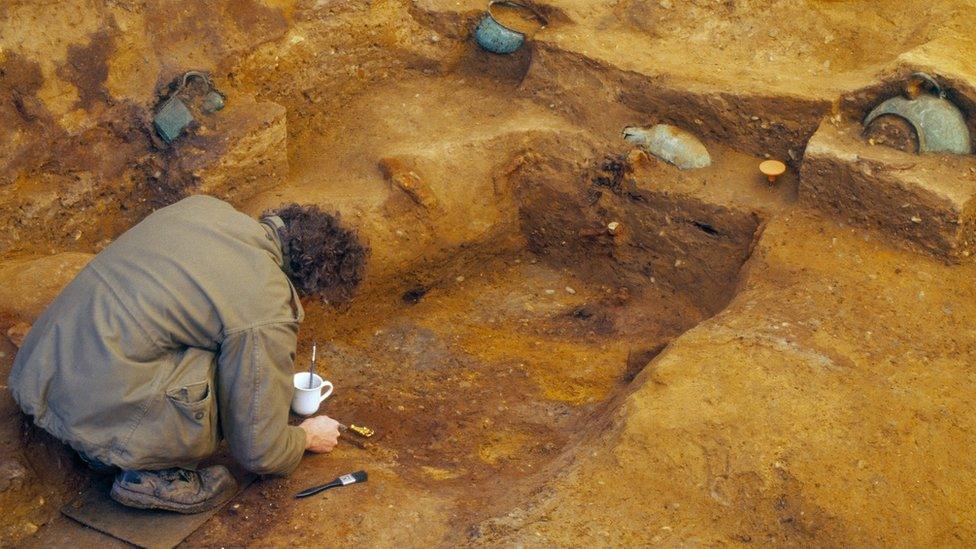Gold pendant find sheds light on county's history
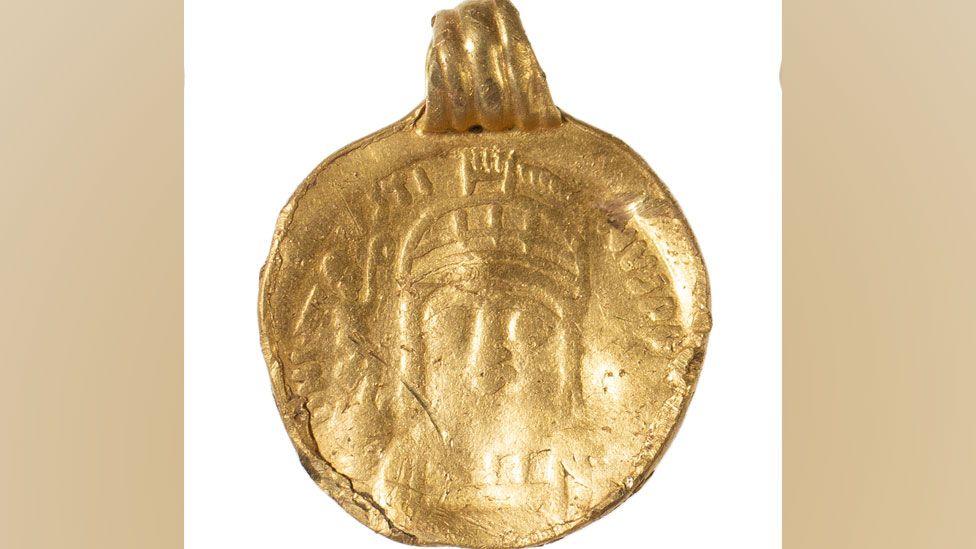
The 19.6mm (0.7in) diameter high quality gold coin pendant is the first evidence of "elite groups of people" in the Thaxted area in the 6th Century
- Published
The discovery of an early medieval gold coin pendant "literally sheds a light" on a period of a county's history about which little is known.
The piece of jewellery is a 6th Century replica of a Byzantine coin and was found by a metal detectorist near Thaxted, Essex.
It was minted in Europe and then brought over to England. A coroner has declared the find treasure and Saffron Walden Museum hopes to acquire it.
Historian Lori Rogerson said it was one of a number of recent finds which were "flipping what we thought we knew about Essex at this time on its head".
"Because in this period we have no written record for the county, it really is in the dark for people working in archaeology and heritage - so this find literally shines a light on that time," the county finds liaison officer added.
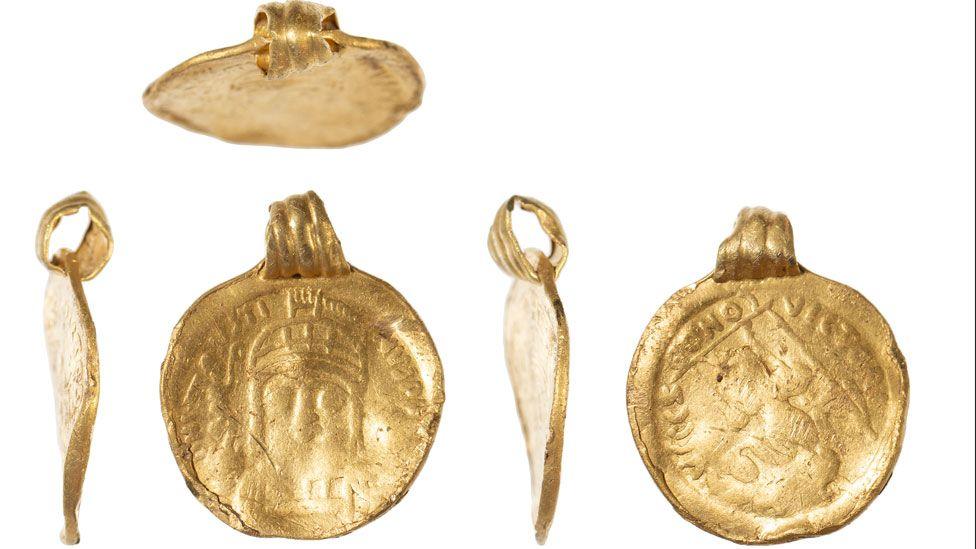
It depicts the Byzantine emperor Justin II on one side and a seated Constantinopolis holding a sceptre and cross on globe on the other
The coin is an imitation of one struck in the name of the Byzantine emperor Justin II, who ruled from AD565 to 578, external.
Miss Rogerson said the replicas were minted in several of the post-Roman Empire kingdoms by various European tribes to "give the impression they had the same level of authority as the empire".
Similar objects from the 6th and 7th Century are rare finds in Essex, unlike in Kent, Suffolk or Norfolk, she said.
"The gold is really high quality and it is an elite object, but we don't get these high status objects found through commercial archaeology, so if this hadn't been found, we'd have had no idea there were these elite groups of people in this area at this time," she explained.
"We know there are high status individuals at Prittlewell, but we are now getting glimpses of where else they were in Essex."
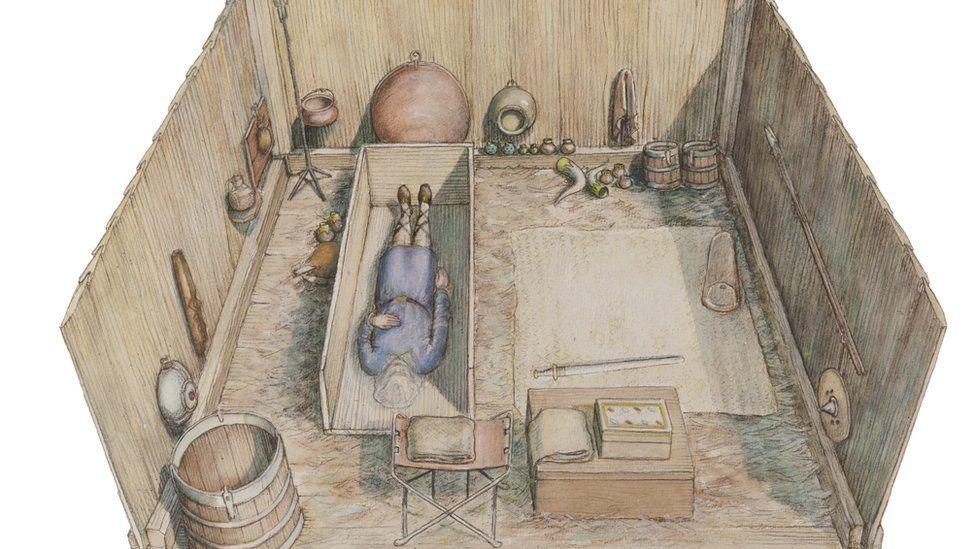
Some artefacts from the Prittlewell Prince burial are on permanent display at Central Museum in Southend
Miss Rogerson was referring to a complete burial chamber of a man dubbed the Prittlewell Prince, which were found near Southend-on-Sea, external in 2003.
Archaeologists unearthed a burial chamber dated AD580 to 605 - full of amazing objects.

Another recent find helping expand knowledge about 6th Century Essex is this finely made 7th Century ring, discovered in Epping Forest
"Without the discovery of other high status burials in Essex, it's these chance finds that fill in the gaps for us which are missing in the archaeology," she said.
"The Thaxted pendant means we've got evidence of elite early medieval people from all four corners of the county now - including lots from Colchester, a finger ring from Epping Forest, the Prittlewell burial, and a couple from Chelmsford."
Get in touch
Do you have a story suggestion for Essex?
Follow Essex news on BBC Sounds, Facebook, external, Instagram, external and X, external.
Related internet links
- Published4 May

- Published24 November 2024
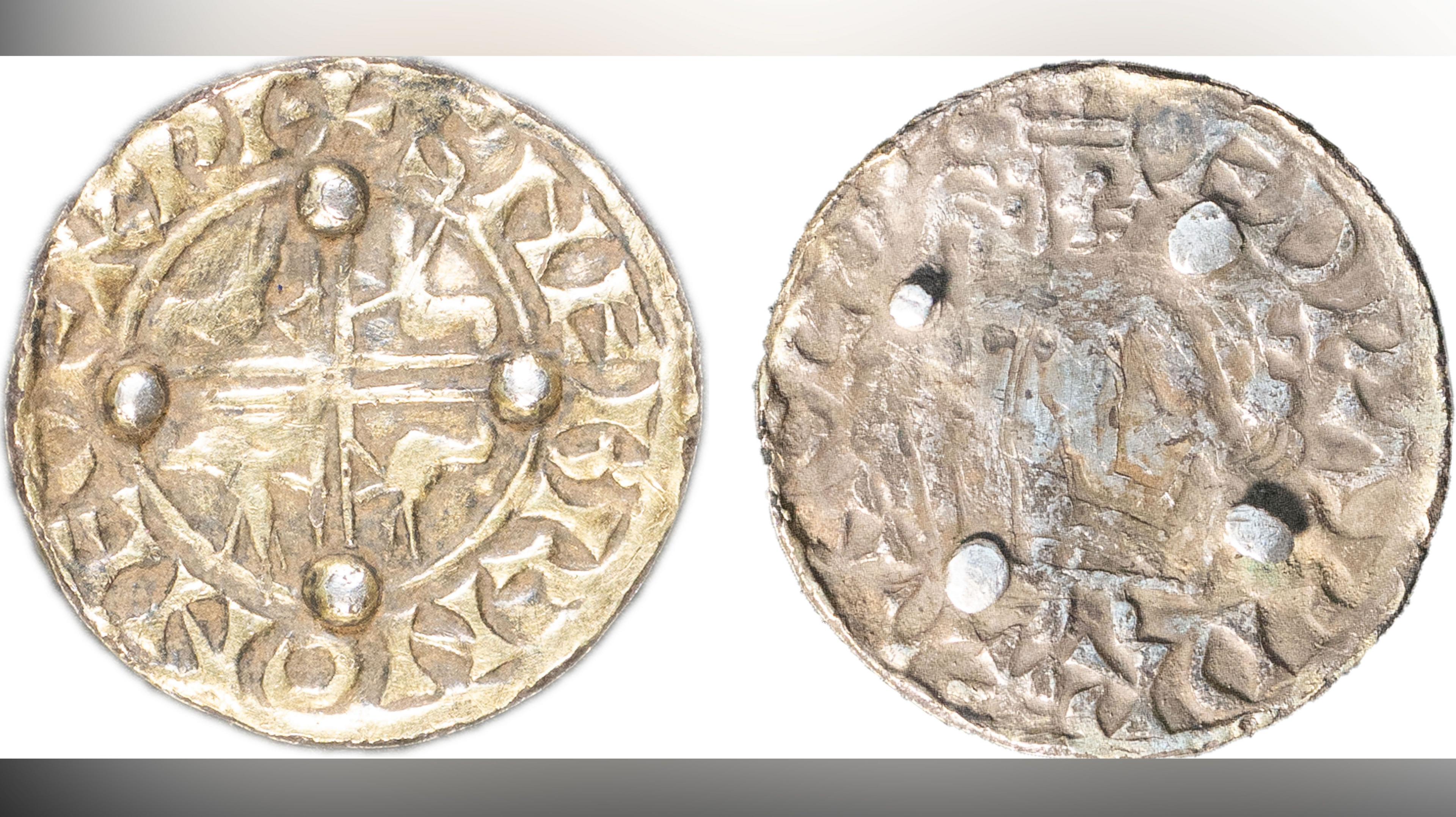
- Published10 February 2024
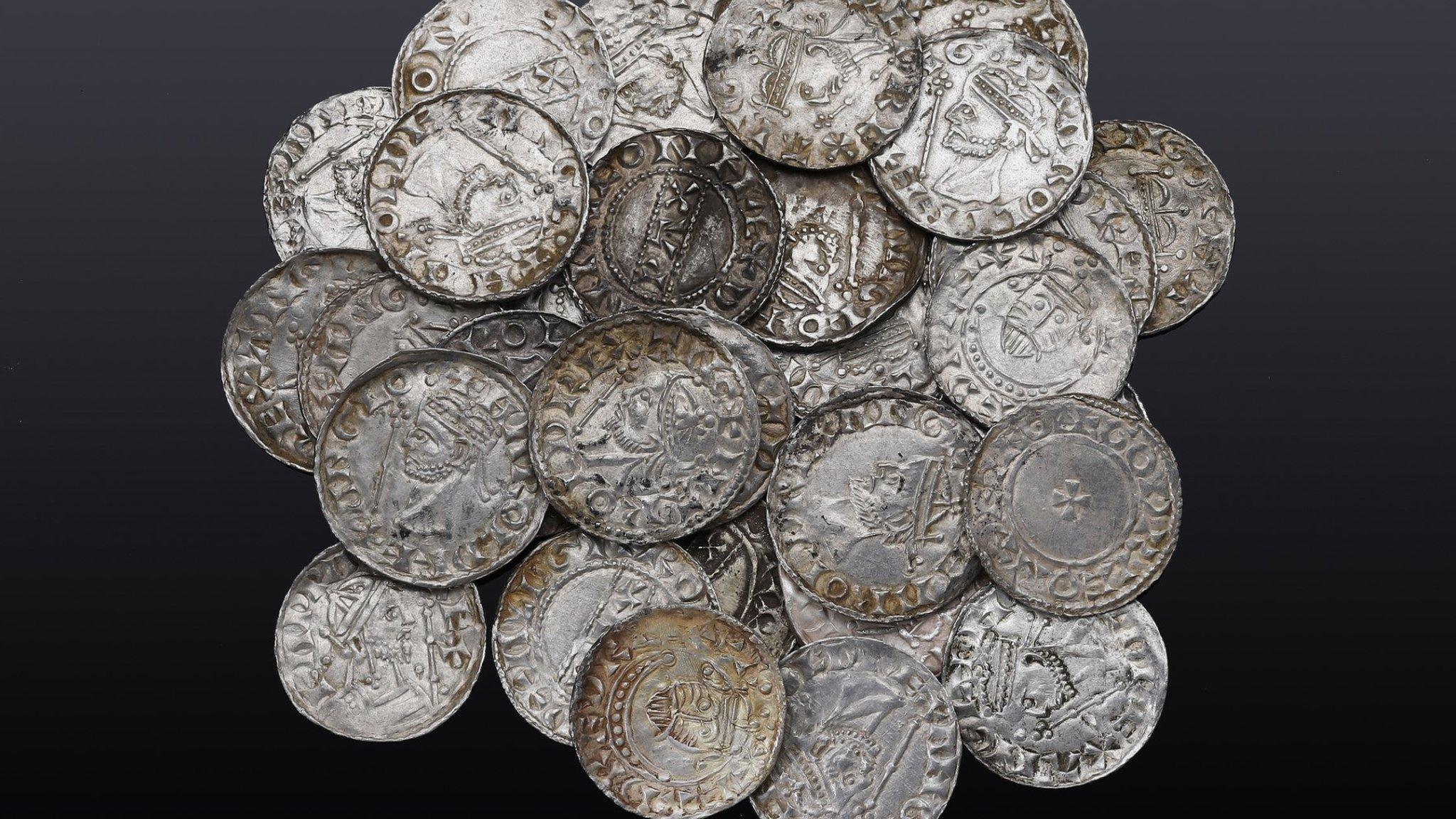
- Published9 May 2019
